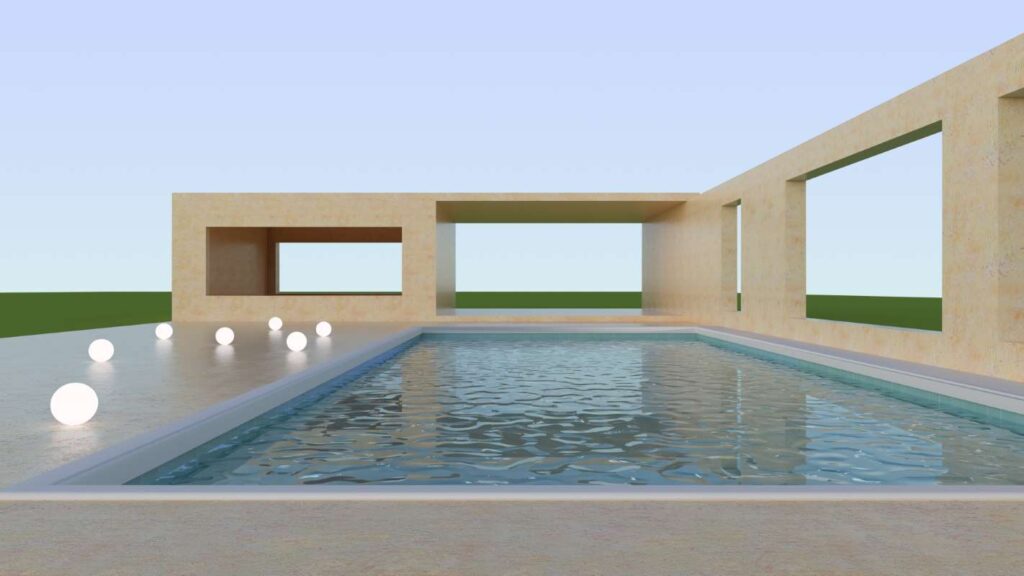How to Conduct Environmental Impact Assessments for Pool Clients
Learn how to effectively conduct environmental impact assessments for pool clients to create sustainable and responsible pool maintenance practices.
This comprehensive guide explores the essential steps for conducting environmental impact assessments (EIAs) for pool clients. With a focus on sustainability, this article delves into the importance of assessing the ecological effects of pool installations and maintenance, providing practical strategies for pool service providers. By understanding and implementing these assessments, you can offer environmentally responsible services that not only meet client needs but also contribute positively to the ecosystem.
Introduction
In an era where environmental consciousness is at an all-time high, pool service providers must adapt their practices to address sustainability concerns. Environmental impact assessments (EIAs) are a critical tool to evaluate the potential ecological consequences of pool installations and maintenance. These assessments help ensure that pool services do not adversely affect local ecosystems, water quality, or biodiversity. This blog post will guide you through the process of conducting effective EIAs for your pool clients, focusing on essential considerations, best practices, and the benefits of implementing these assessments in your service offerings.
Understanding Environmental Impact Assessments
– Definition of EIA: An environmental impact assessment is a systematic process used to evaluate the potential environmental effects of a proposed project or development, in this case, pool installation or maintenance.- Importance of EIA: Conducting an EIA helps identify potential risks to the environment and provides the opportunity to mitigate negative impacts before they occur. It also aids in compliance with local regulations and promotes sustainable practices in the pool industry.For pool service providers, understanding the importance of EIAs is crucial. By performing these assessments, you can reassure clients that their pool maintenance will not compromise local ecosystems or water sources.
Key Components of an EIA for Pool Clients
To conduct an effective EIA for pool clients, consider the following key components:1. Project Description: – Outline the scope of the pool installation or maintenance project, including size, location, and materials used. – Provide a detailed timeline for the project and any potential disturbances to the surrounding environment.2. Baseline Environmental Conditions: – Assess the current environmental conditions of the site, including water quality, soil health, and biodiversity. – Gather data on local flora and fauna that could be affected by the pool project.3. Impact Prediction: – Analyze how the pool installation or maintenance could affect local ecosystems, focusing on water usage, chemical runoff, and habitat disruption. – Use quantitative and qualitative data to predict the potential consequences on the environment.4. Mitigation Measures: – Propose strategies to minimize negative environmental impacts, such as using eco-friendly materials, proper drainage systems, and sustainable water management practices. – Offer solutions like native plant landscaping to enhance biodiversity and reduce water consumption.5. Monitoring and Evaluation: – Establish a plan for ongoing monitoring of environmental conditions post-installation to ensure that mitigation measures are effective. – Collect feedback from clients regarding any environmental concerns that may arise during and after the project.By incorporating these components, pool service providers can deliver comprehensive EIAs that address both client requirements and environmental responsibilities.
Benefits of Conducting EIAs for Pool Clients
Conducting environmental impact assessments for pool clients offers several significant benefits:- Enhanced Client Trust: – Clients appreciate transparency regarding the environmental implications of their pool projects. By providing thorough EIAs, you demonstrate a commitment to sustainability, enhancing client trust and satisfaction.- Compliance with Regulations: – Many regions have specific regulations regarding environmental impacts. Conducting an EIA ensures compliance with local laws, helping clients avoid potential fines or legal issues.- Sustainable Practices: – Implementing eco-friendly practices based on EIA findings contributes to a healthier environment. This can include the use of sustainable materials, low-impact installation techniques, and environmentally conscious maintenance practices.- Market Differentiation: – As a pool service provider, integrating EIAs into your offerings can set you apart in a competitive market. Clients are increasingly seeking service providers who prioritize sustainability, making EIAs a valuable selling point.- Long-Term Cost Savings: – By identifying potential issues early, EIAs can help prevent costly environmental damages and remediation efforts down the line. This proactive approach can lead to significant long-term savings for both you and your clients.By highlighting these benefits to your clients, you can position yourself as a forward-thinking service provider dedicated to environmental stewardship.
Best Practices for Conducting EIAs
To ensure that your EIAs are effective and valuable to your clients, consider these best practices:- Engage Stakeholders: – Collaborate with clients, community members, and environmental experts during the assessment process to gather diverse perspectives and insights.- Use Technology: – Leverage advanced technologies such as Geographic Information Systems (GIS) and environmental modeling software to enhance the accuracy of your assessments.- Stay Informed on Regulations: – Regularly update your knowledge of local and national environmental regulations to ensure compliance and best practices.- Continual Improvement: – After conducting an EIA, evaluate the process and outcomes to identify areas for improvement. This reflection can enhance the quality of future assessments.- Educate Clients: – Provide educational resources related to environmental issues, pool maintenance, and sustainability practices. Empower your clients with knowledge that encourages responsible behavior.By adopting these best practices, you can improve the quality and effectiveness of your EIAs, ultimately benefiting both your business and the environment.
Conclusion
In conclusion, conducting environmental impact assessments for pool clients is not just a regulatory obligation; it is a vital aspect of responsible business practice in the pool service industry. By understanding the importance of EIAs, integrating key components, and adopting best practices, pool service providers can ensure that their operations are environmentally sustainable. Embracing this approach not only enhances client trust but also sets your business apart in a competitive market. As the demand for eco-friendly services continues to grow, now is the time to invest in conducting thorough EIAs. By doing so, you will not only protect the environment but also position yourself as a leader in sustainable pool maintenance. For those looking to expand their business in an environmentally conscious manner, explore options like
Pool Routes For Sale with Superior Pool Routes, where you can acquire established customer accounts while adhering to sustainable practices. To learn more about how to incorporate EIAs into your services or to explore available pool routes in your region, please visit our
Pool Routes FAQ or
Superior Pool Routes Home Page. Together, we can make a positive impact on the environment while providing exceptional service to our clients.



